The Hives
'It is estimated that it would cost UK farmers £1.8 billion a year to pollinate their crops manually if wild bees disappeared.' - The Soil Association
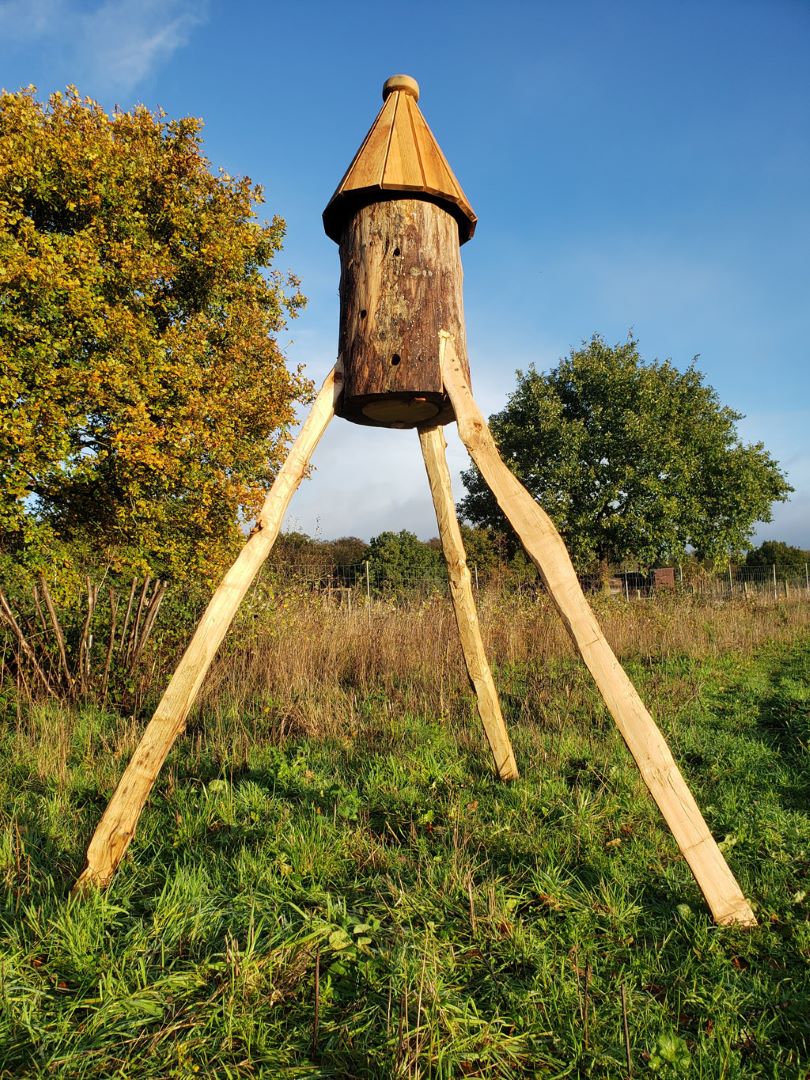
Rewilding Bees
Made from a hollowed out tree trunk raised above the ground, the log hive provides a home for wild honey bees. An alternative to where bees would naturally live in hollows and crevices in trees.
As with a tree, the log has thick walls providing good insulation keeping the hive warm in the winter and cool in the summer. A waterproof and insulated roof keeps the rain out.
Why?
'Bees, hoverflies and other pollinating insects that we rely on for our fruit and vegetable crops are declining in numbers due to climate change and habitat loss.' - Reading University Research
The log hive isn't intended as a way of harvesting honey but allows the bees to live in a natural way. Building strong healthy communities without human interference and helping reverse the decline in their population. Taking a bee centred approach.
Locally Made For Local Bees
The hives are constructed in my workshop in South Oxfordshire. Where possible I use locally sourced timber and materials.
Prices
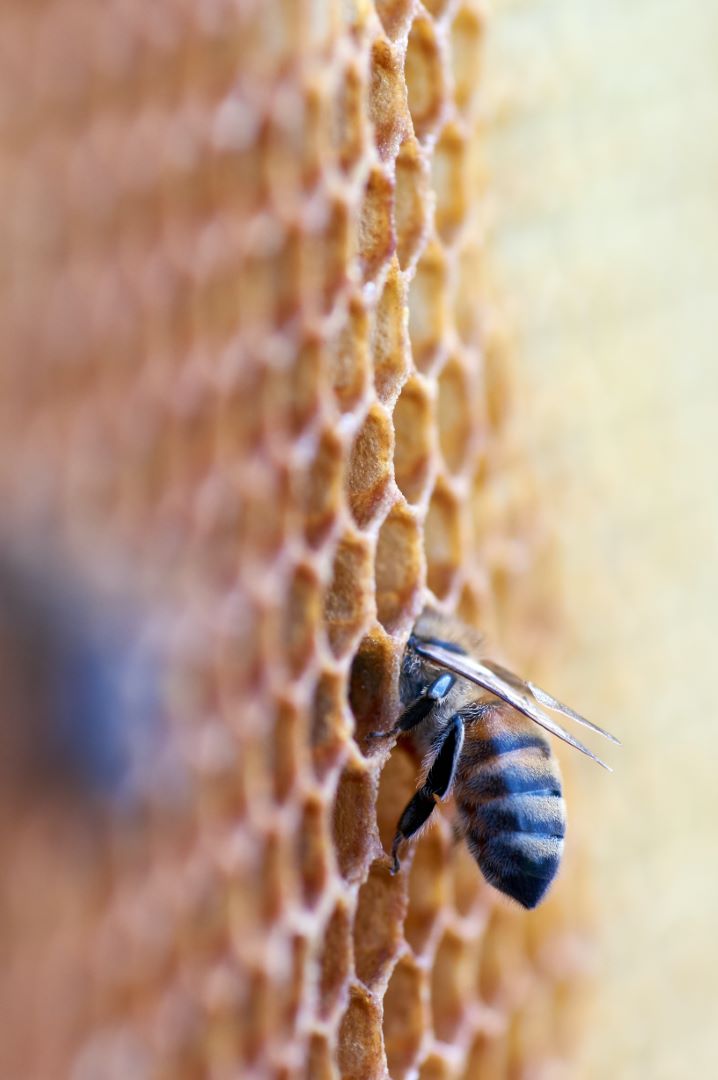
A complete hive consists of:
- a hollowed out log
- a lid
- a removeable bottom
- three legs
- a roof
Total cost - £530
Delivery and installation (up to 100 miles from Reading) - from £110
Ideally the hive should be installed before summer ready for bees who are swarming and looking for a new home.
Currently 95% of the timber I use is from sustainably managed woods within 15 miles of my workshop.
A Small Price to Pay
About Me
I'm Steve Gibson and welcome to the latest addition to my woodland product business.
I love to make use of local timber in a sustainable way - making with, milling and coppicing local wood. Making log beehives in my workshop in South Oxfordshire makes use of all these skills and interests.

Making a Hive
The logs are from a durable species including sweet chestnut, larch and scots pine.
The hive is raised about 6ft above the ground on three legs made from sweet chestnut.
When the hive is installed a piece of comb from an existing or old hive is attached to the underside of the lid to make the hive more attractive to bees. Other incentives such as propolis are also spread round the entrance holes.

Starting to hollow the log with a chainsaw
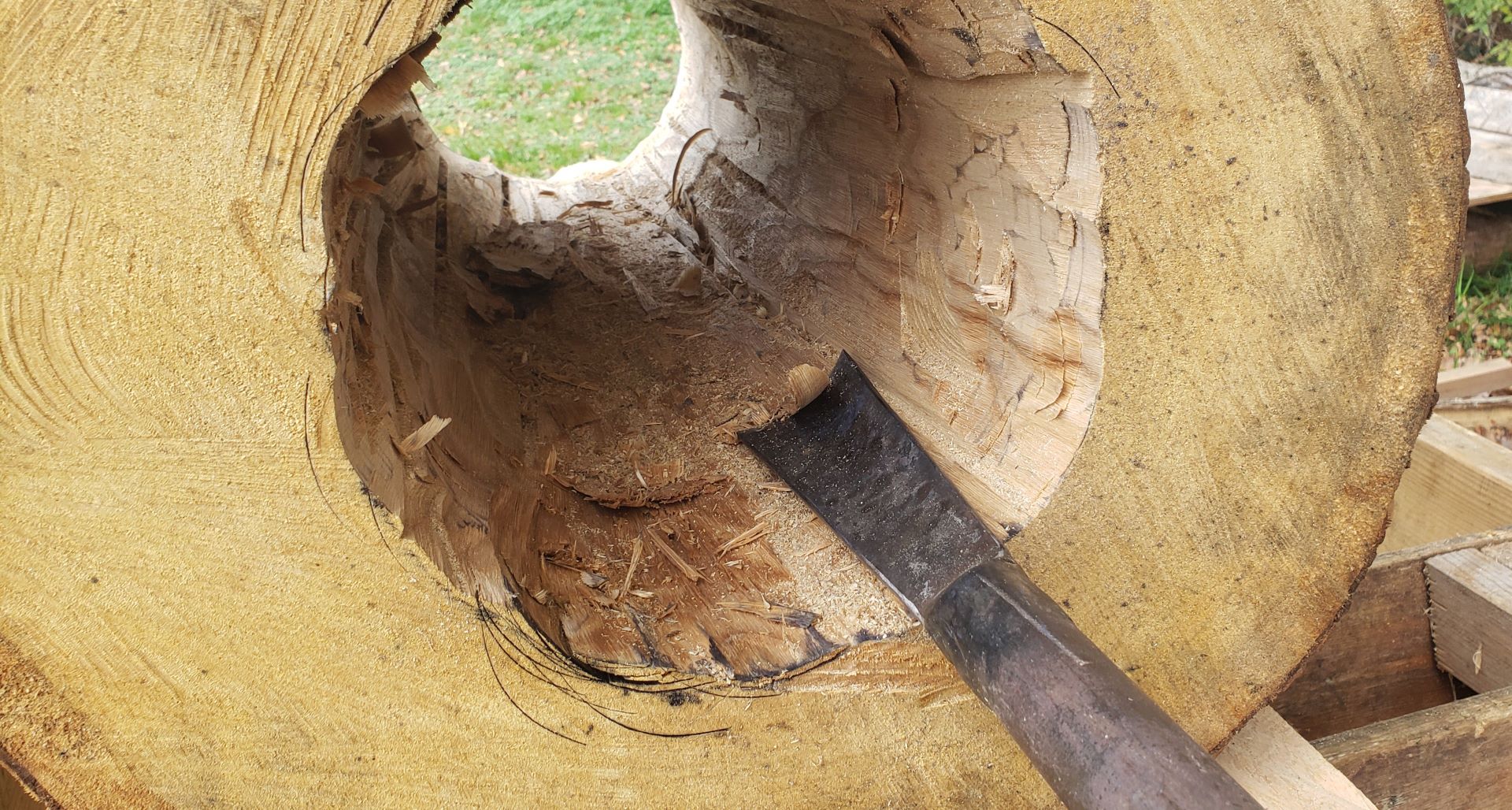
A gouge is used to finish the cavity to approximately 10 inches diameter

Chiseling rebates for the legs

The log is approximately 32 inches tall and a minimum 18 inches diameter
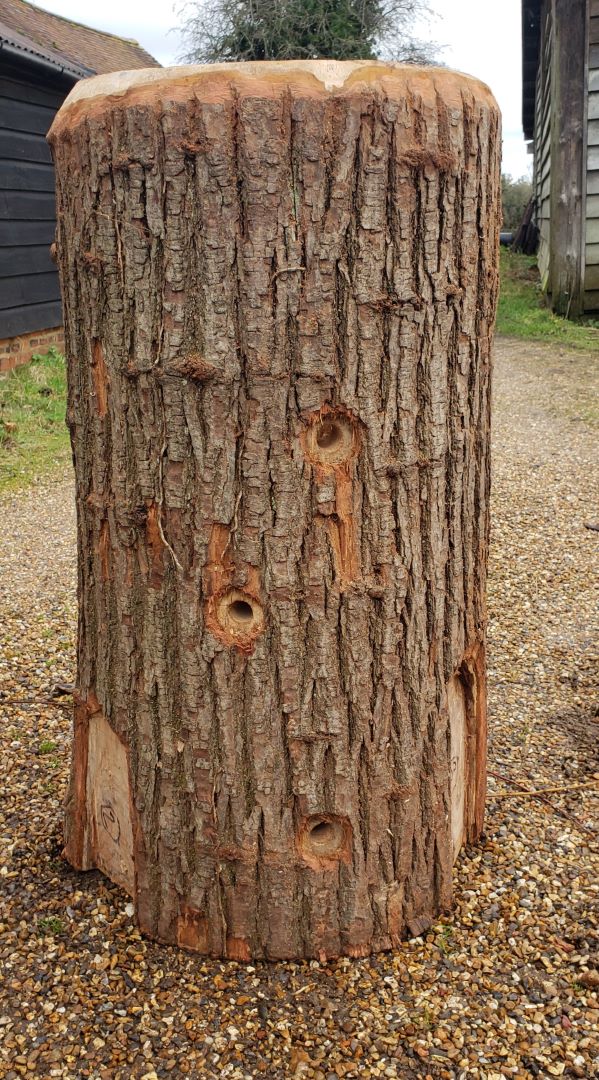
Three holes for bees to use as entrances

Hardwood removeable bottom

Hardwood lid
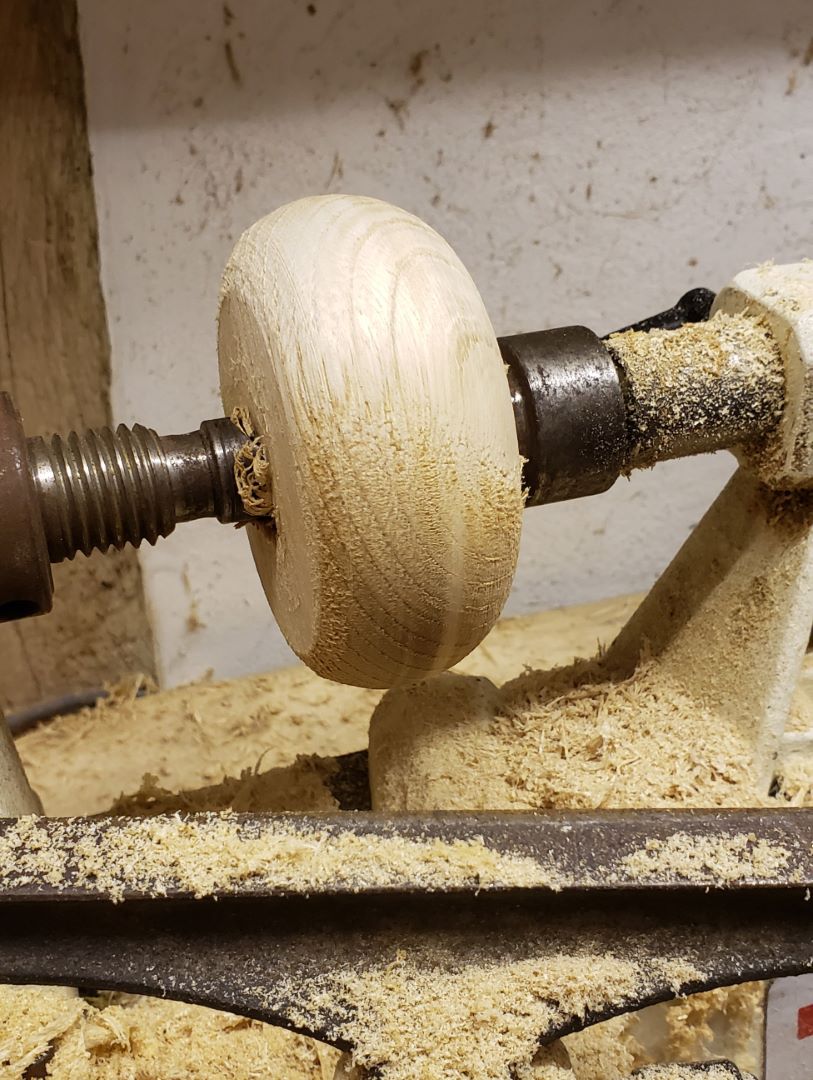
Turning a bit of decoration for the roof
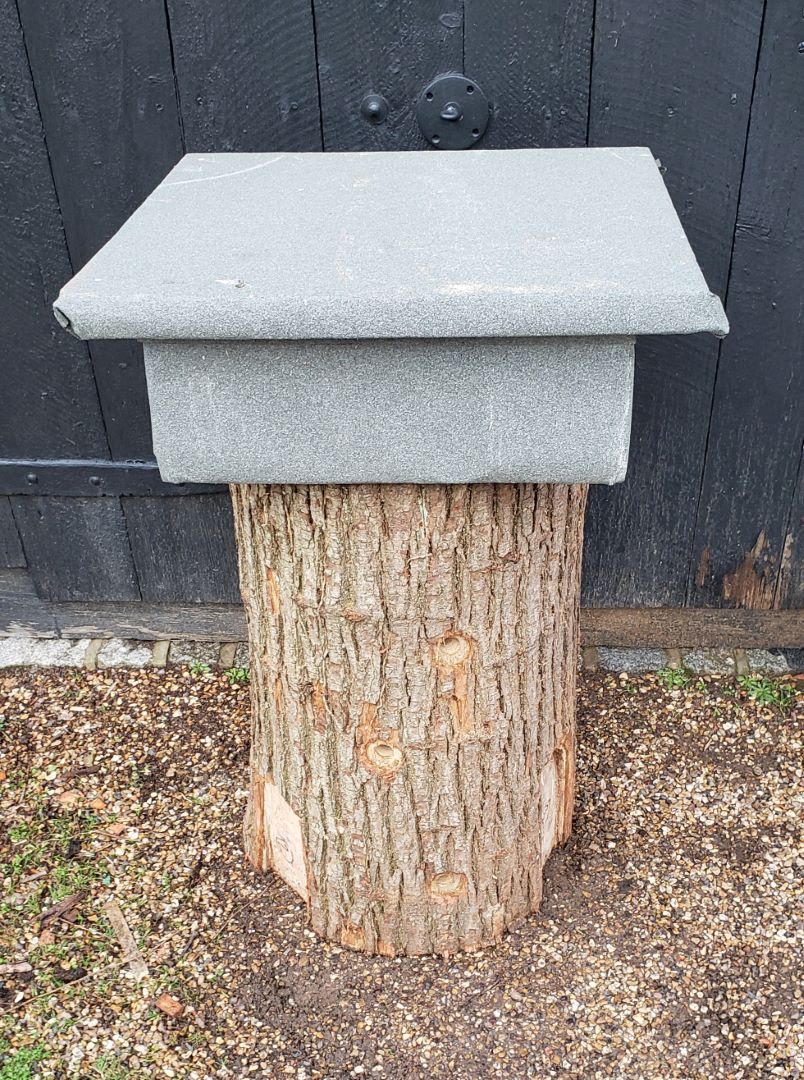
Basic OSB, roof felt and insulation roof
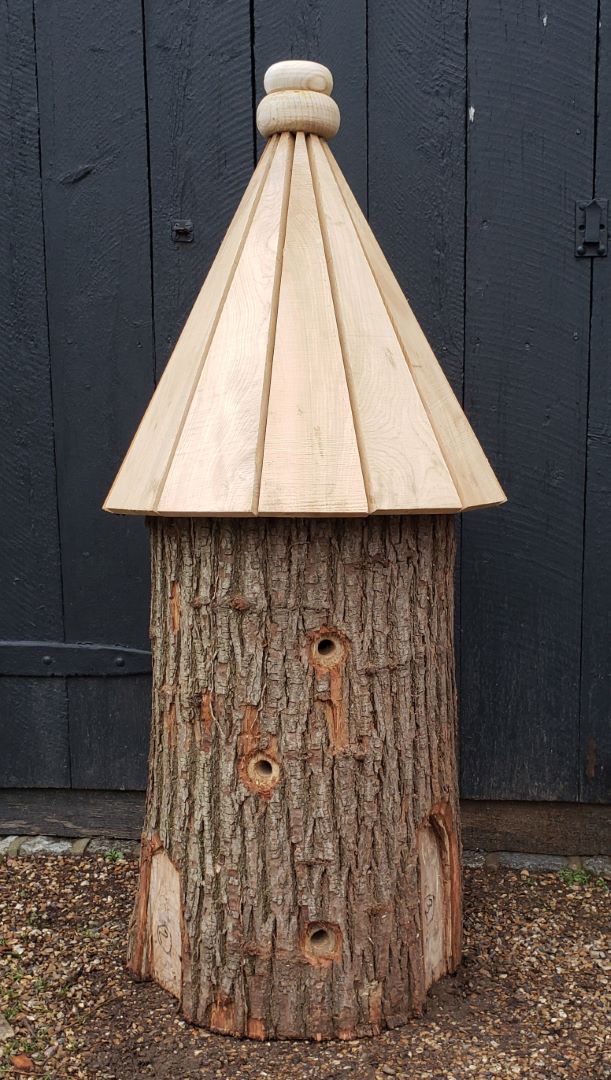
Hive with conical cedar roof
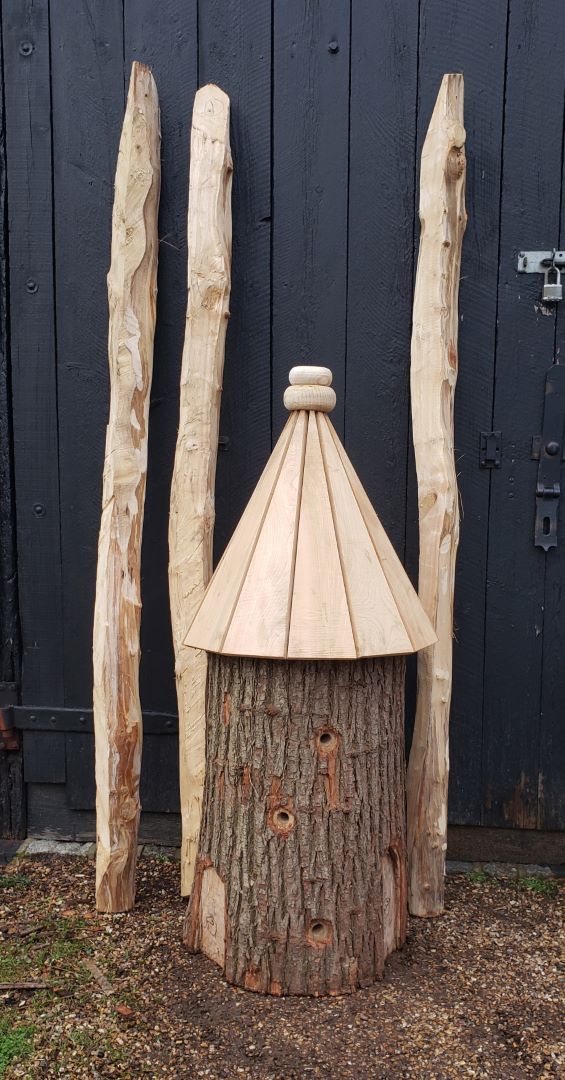
Ready for installation on site

Attaching legs to the log hive
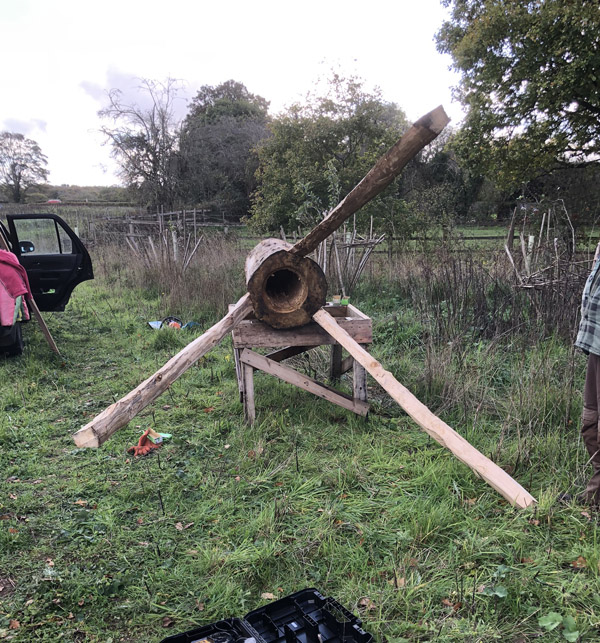
Ready for raising

Up and in position. Ready for it's roof
More Information
There is a feast of information out there relating to natural beekeeping. These are a few of the resources I have found useful.
Supporters and Other Folk I Work With
Contact
Please contact me for any more infomation.
Call:
07905 062527